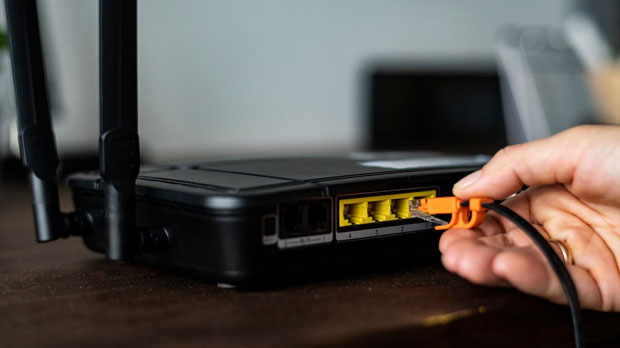When it comes to ensuring your online privacy and security, there are several tools available, but two of the most commonly discussed options are free socks5 proxies and Android VPN applications. Both tools provide anonymity and protect users from tracking, but they work in different ways and offer distinct advantages and limitations. Choosing between them depends on your specific needs—whether you’re more concerned about privacy, security, speed, or ease of use. In this article, we will explore the differences between these two options and help you determine which one is better suited to your online activity. What is a Free socks5 proxy?A Socks5 proxy is a type of proxy server that facilitates the routing of your internet traffic through an intermediary server. Unlike other proxies that only work with specific protocols (like HTTP), Socks5 proxies are more versatile and can handle various types of traffic, including web browsing, file transfers, and even peer-to-peer (P2P) connections. Socks5 proxies do not encrypt your data, which means they are faster than many VPNs, but they offer less security in terms of protecting your information.Free Socks5 proxies, as the name suggests, are proxy servers that are offered for free. However, they may come with limitations, such as lower speeds, limited server locations, and a lack of customer support. While a Socks5 proxy is ideal for users looking for speed and anonymity for basic tasks, it is not the best option for users who require high-level security.What is an Android VPN Application?A VPN (Virtual Private Network) creates an encrypted tunnel between your device and a remote server, ensuring that all of your online activity is secure and private. VPNs mask your real IP address and protect your browsing data from being intercepted by hackers, ISPs, or any other third parties. They also allow you to access geo-blocked content by making it appear as though you are browsing from a different location.Android VPN applications are specifically designed to work on Android devices, offering the convenience of encrypting internet traffic, protecting your privacy, and bypassing geo-restrictions. Unlike Socks5 proxies, VPNs typically use encryption, which ensures that your data remains secure, even when using public Wi-Fi networks. Free Android VPN apps, however, may come with limitations such as slower speeds, data caps, or potential privacy risks due to logging practices.Key Differences: free socks5 proxy vs. Android VPNTo help you make a more informed decision, let’s dive into the core differences between free Socks5 proxies and Android VPN applications.1. Speed and PerformanceWhen it comes to speed, free Socks5 proxies typically outperform VPNs. This is because they don’t encrypt your traffic, which reduces the processing overhead. As a result, users often experience faster browsing speeds, making Socks5 proxies a good option for activities such as streaming, downloading, or browsing without significant buffering.On the other hand, VPNs require encryption, which can slow down your internet connection. Although many premium VPN services offer high-speed connections, free Android VPN apps often come with slower speeds, limited server locations, and data throttling.2. Security and PrivacyOne of the biggest advantages of a VPN is its security. A VPN provides end-to-end encryption, meaning your data is scrambled before it leaves your device and can only be decrypted at the VPN server. This makes it highly effective in protecting sensitive information, especially when using public Wi-Fi networks, where hackers are more likely to intercept unprotected data.In contrast, Socks5 proxies do not encrypt your data. They simply mask your IP address and route your traffic through an intermediary server. While this provides some level of anonymity, it does not protect your data from being intercepted or tracked by third parties. If you need a tool that offers robust security, a VPN is the better choice.3. Anonymity and Geo-RestrictionsBoth Socks5 proxies and VPNs can provide anonymity by hiding your real IP address, allowing you to access websites and services as if you were in a different location. However, VPNs typically provide better protection in terms of geo-restrictions. Since VPNs can encrypt your traffic and disguise your IP address, they are more effective at bypassing censorship, accessing geo-blocked content, and unblocking streaming services.Socks5 proxies, while also capable of masking your IP address, are more likely to be detected by websites or services attempting to block proxy traffic. This can result in limited access to certain sites or services.4. Ease of Use and SetupSetting up a free Socks5 proxy is often straightforward. Most of the time, you only need to configure the proxy settings in your browser or operating system. It is ideal for users who need a quick and easy solution for bypassing geo-blocks or accessing content from different regions.VPNs, especially Android VPN applications, often require more setup. While many apps are designed to be user-friendly, you still need to download the app, sign in, and choose a server location. This process can be slightly more cumbersome for users who are not familiar with VPNs.5. Cost and AvailabilityBoth Socks5 proxies and Android VPN applications offer free options, but free services often come with limitations. Free Socks5 proxies may offer limited bandwidth, slower speeds, and unreliable connections. They may also lack support and could expose you to security risks.Similarly, free Android VPN apps often come with data limits, slower speeds, and potentially invasive logging practices. Premium VPN services usually provide better performance, more server locations, and enhanced security features, but they come with a price tag.Which One Should You Choose?Ultimately, your choice between a free Socks5 proxy and an Android VPN application depends on what you prioritize most in your online activities.- Choose a free Socks5 proxy if you are primarily looking for speed and a simple way to bypass basic geo-restrictions. Socks5 proxies are also a good option if you’re not concerned about security and are using the tool for non-sensitive browsing activities. - Choose an Android VPN if you need a secure and private internet connection. If you often use public Wi-Fi networks, need to encrypt your traffic, or want to access geo-blocked content securely, a VPN is the better choice. Even though free VPN apps may come with some limitations, they still offer significantly better security than Socks5 proxies.In conclusion, there is no one-size-fits-all solution when it comes to online privacy and security. Both free Socks5 proxies and Android VPN applications have their strengths and weaknesses. By assessing your needs—whether it's speed, security, anonymity, or access to restricted content—you can make an informed decision about which tool best suits your requirements.
Jan 07, 2025
![arrow]()




























































